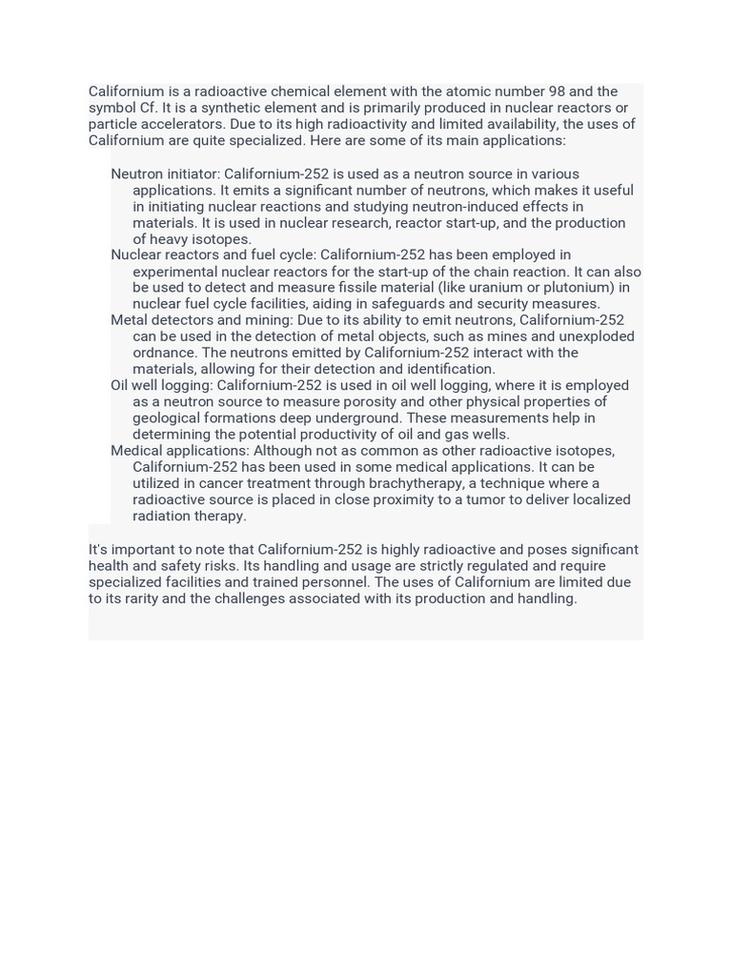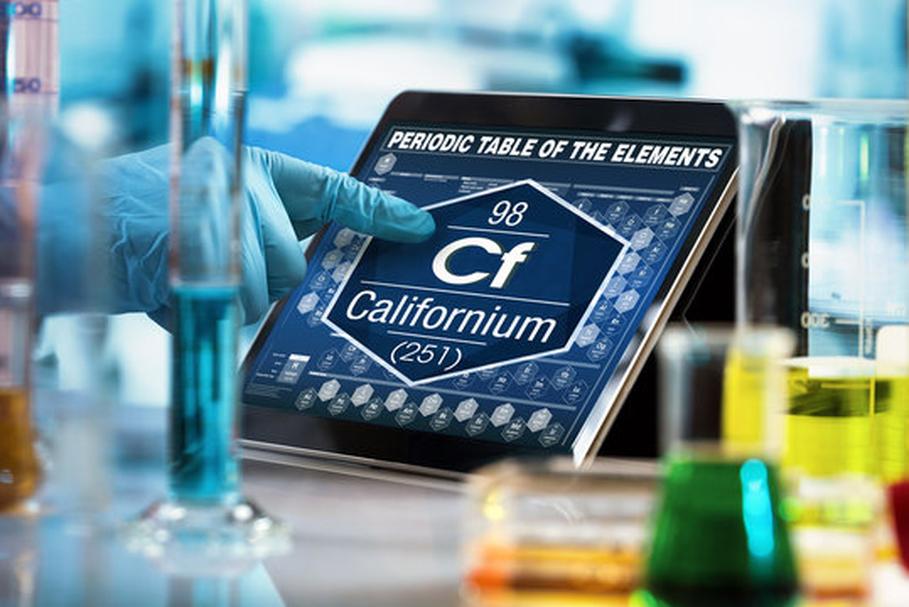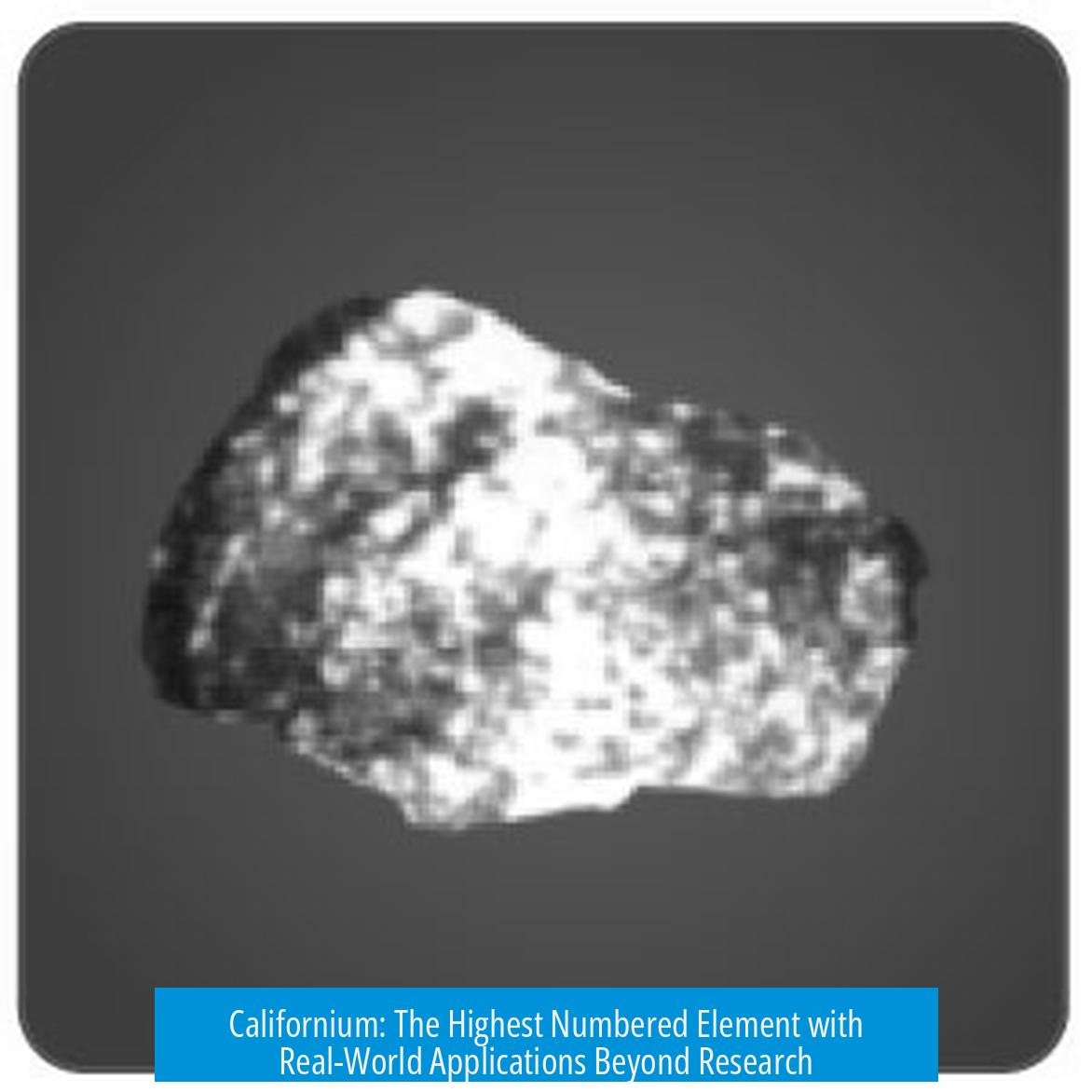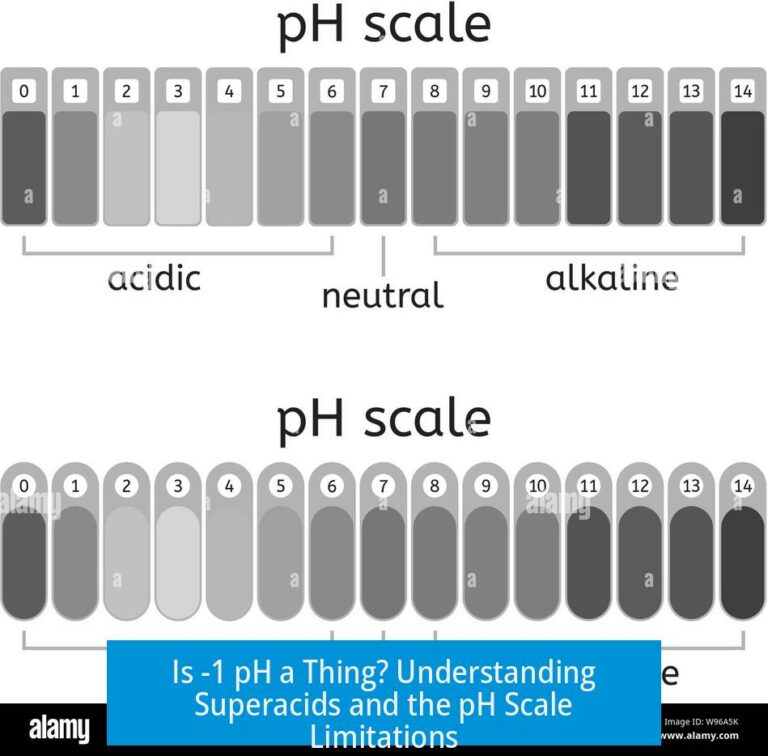Element with Highest Number Used Beyond Research

Californium (Atomic Number 98) is the element with the highest atomic number on the periodic table that has practical uses beyond research. It serves primarily as a neutron source in various applications.
Californium’s Practical Role

Californium emits neutrons, which makes it valuable for applications outside pure scientific study. Its neutron emission supports uses in:
- Industrial radiography for inspecting metal parts and welds
- Neutron activation analysis to detect trace elements
- Starting nuclear reactors and neutron moisture gauges
- Medical treatments such as neutron therapy for cancer
These non-research applications rely on its strong neutron output. Despite being a rare and expensive element, californium’s neutron source capability is unmatched, making it practical in safety, manufacturing, and healthcare.

Comparison to Neighboring Elements
Curium (Element 96) is also used outside research. It acts as a thermal generator in satellites, providing heat through radioactive decay. Additionally, curium helps in industrial process control by estimating material quantities on conveyor belts.

| Element | Atomic Number | Use Outside Research |
|---|---|---|
| Californium | 98 | Neutron source for industrial, medical, and safety applications |
| Curium | 96 | Satellite thermal generators; industrial process control |
| Fermium | 100 | Very limited due to scarcity; no significant practical uses |
Why Higher Numbered Elements Lack Practical Uses
Elements with atomic numbers higher than 98 tend to be highly unstable and are produced in minimal amounts. Fermium (100) and beyond have extremely short half-lives and exist only in trace quantities. Their scarcity limits real-world applications beyond academic research.

Key Points
- Californium (98) is the highest atomic number element with practical use beyond research.
- Its main application is as a neutron source in diverse fields.
- Curium (96) also has applied uses in satellites and industry.
- Elements above californium are unstable and scarce, restricting their applications.
What Is the Element with the Highest Number on the Periodic Table with an Actual Use in the World Besides Research?
In the grand lineup of the periodic table, the elements with high atomic numbers are usually the elusive celebrities of chemistry. Most of them hang out behind velvet ropes, restricted to labs, experiments, and research papers. But among these heavyweights, one element stands out by breaking the mold and stepping into the real world, serving practical roles beyond the ivory tower of science.
The element with the highest atomic number that has an actual, practical use in the world, beyond just research, is Californium (Element 98).
Californium’s claim to fame? It’s used as a potent neutron source in various industrial and practical applications. But let’s take a step back and explore how it compares with its heavy neighbors and what makes it such a unique player on the periodic stage.
Californium (Element 98): More Than a Lab Curiosity
At atomic number 98, californium sits near the end of the actinide series. It’s no shrinking violet. Aside from its notorious radioactivity, it shines as a powerful neutron emitter. This quality turns out to be a jackpot for applications beyond just academic curiosity.
Californium is used as a neutron source. This role is critically important in fields like nuclear reactors, medicine, and even security. For example, in oil exploration, neutron sources help in well logging to analyze underground formations. Industrial radiography also uses californium to inspect metal parts, ensuring no cracks hide in critical infrastructure. See the pattern? Real-world uses that affect everyday technologies and safety.
So, californium isn’t just a fancy element confined to dusty labs. It is an industrial hero, quietly powering tools and processes all around us.
Curium (Element 96): The Satellite Workhorse
Before californium claims the spotlight, let’s give some credit to curium, which comes just a couple of elements earlier on the table at number 96. Curium isn’t just sitting pretty either.
One well-documented practical use of curium is in satellite thermal generators. Solar power isn’t always reliable in space, and batteries only go so far. Here enters curium, generating heat through radioactive decay, keeping instruments warm and functional in the frigid void of space. So next time you look at weather data or GPS signals, there’s a good chance curium is quietly doing its job millions of miles away.
Curium also plays a less glamorous but no less important role in large industrial processes on Earth. It can help estimate the amount of solid materials inside batch reactors by emitting radiation that sensors pick up. This lets factories fine-tune reactions by knowing how much reactants or chemicals to add. Practical, precision-driven, and very much in the realm of everyday industry.
What About the Elements Beyond Californium?
You might wonder, “What about heavier elements like fermium (100) or beyond?” These chemical aristocrats are mostly VIPs to research only. Fermi-what?
Fermium, element 100, is incredibly rare—around a million times scarcer than californium. The tiny quantities available choke off any hopes of practical, large-scale uses. Sure, it’s also capable of neutron emission, but there just isn’t enough of it to power industrial or even modest applications. The same goes for heavier elements such as einsteinium, mendelevium, and beyond—they lurk mainly in lab environments, their potential locked behind scarcity and extreme radioactivity.
Here’s a quick rundown:
- Californium (98): Practical neutron source, used industrially and medically.
- Curium (96): Satellite heat generators and industrial process control.
- Fermium (100) and beyond: Scarce, mainly research-only with negligible real-world application.
Why Does This Matter?
Because it shows an interesting twist in heavy element chemistry. These elements, often dismissed as pure curiosities, do find niches where their unique properties translate into tangible, everyday impacts. Californium’s neutron emission facilitates technologies that touch diverse sectors—from energy and medicine to exploration and manufacturing.
Surprisingly, this challenges the stereotype that elements beyond uranium (element 92) exist solely in labs. Here’s a lesson for enthusiasts and professionals alike: the periodic table still holds surprises that matter outside research halls.
Practical Tips and Takeaways
- In industry: If you’re involved with nuclear reactors or radiography, californium could be part of your toolkit. Its neutron source capability is unique.
- In aerospace: Curium-powered thermal generators might be flying above us right now. Understanding these elements helps appreciate satellite tech resilience.
- In education: When teaching heavy element chemistry, mention californium and curium’s real uses—it makes the discussion relatable and grounding.
Final Thoughts: The Heavyweights with Real-World Punch
The periodic table is like a vast cosmic family photo. Some members show off their trophies publicly—hydrogen fuels stars, iron builds us, and silicon runs the digital world. Others, like californium and curium, are the unsung heroes backstage, delivering neutron beams and steady heat to keep industrial and space technologies ticking.
So next time you think about the “heaviest” or “highest-numbered” elements, remember: californium holds the title for the heaviest element with legitimate applications in today’s world. Meanwhile, curium quietly supports space missions and industrial processes, proving that even exotic elements can find useful niches.
Who knew the heavyweights of the periodic table could be so practical after all?
What is the heaviest element on the periodic table used outside of research?
Californium (element 98) is the heaviest element with practical uses beyond research. It is mainly used as a neutron source in industry.
How is californium used in real-world applications?
It serves as a neutron source in several industrial sectors. This helps with tasks like material analysis and detecting elements through neutron emission.
Does any element heavier than californium have practical uses?
Fermium (element 100) and elements beyond californium have limited availability. Their uses are mostly restricted to research due to scarce quantity.
What practical roles does curium play outside research?
Curium (element 96) is used on satellites as a thermal generator. It also helps control large industrial processes by estimating material amounts in reactors.
Why is californium preferred over heavier elements like fermium?
Californium is more available than fermium, which exists in much smaller amounts. This makes californium suitable for practical neutron source applications.





Leave a Comment